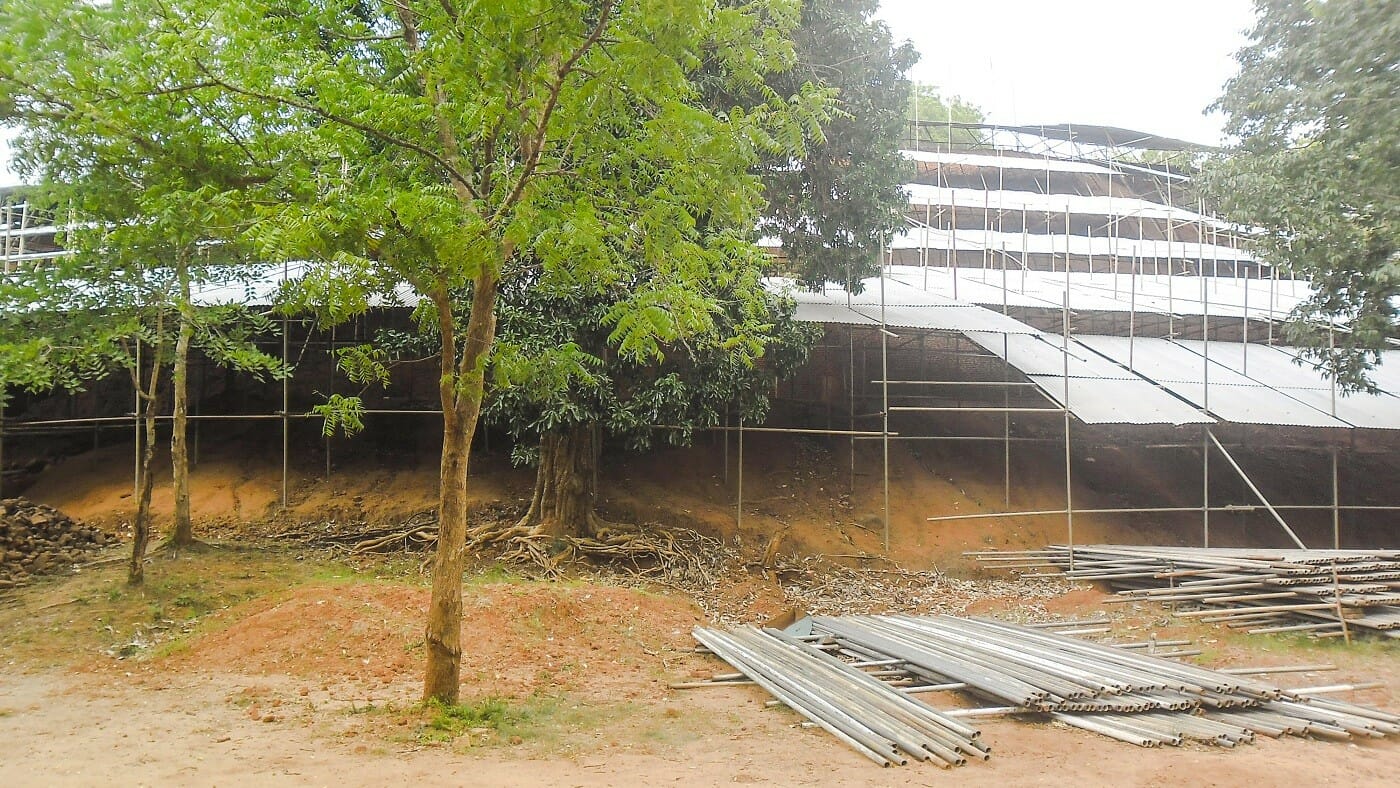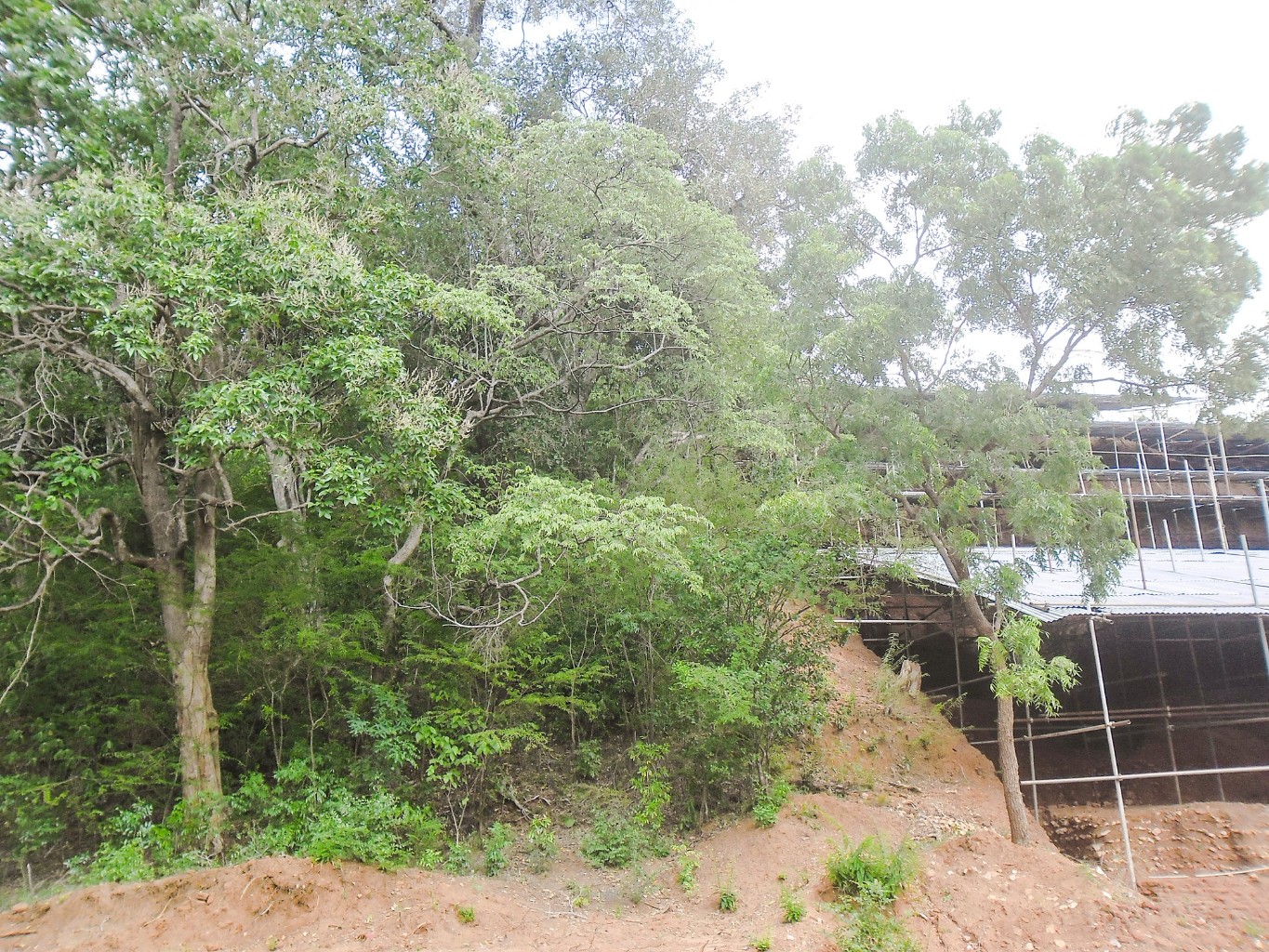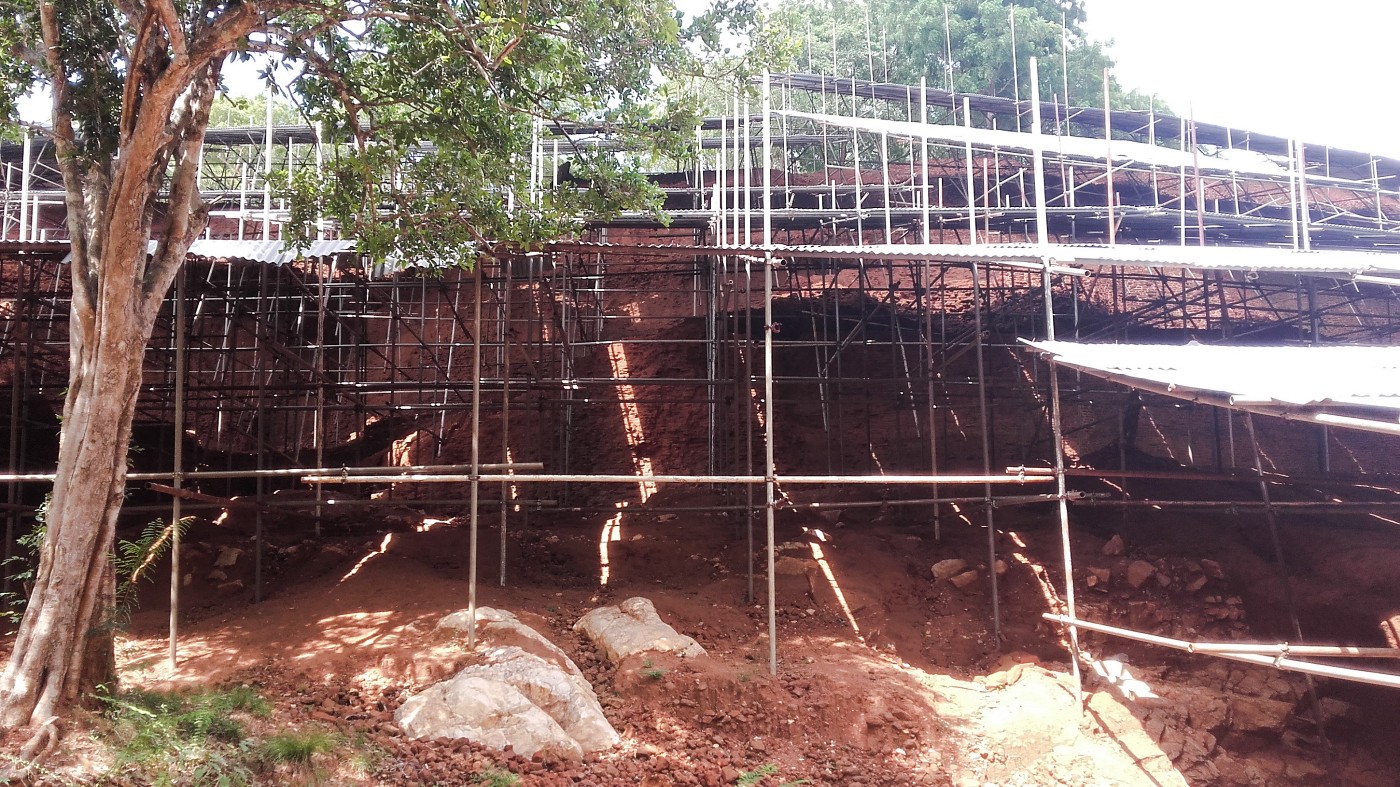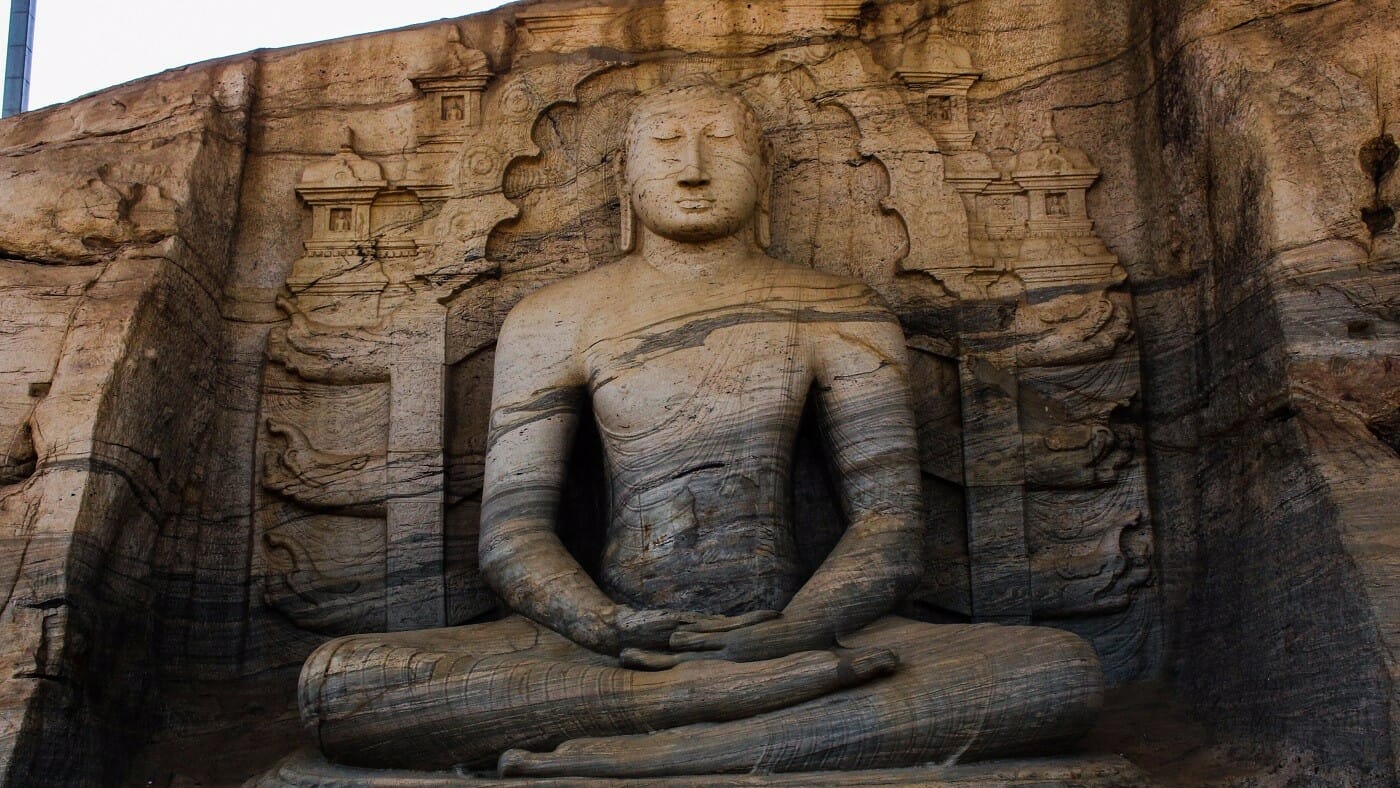
Place Categories: Historical Places Religious PlacesPlace Tags: Ancient City of Polonnaruwa Ancient Sri Lanka Stupa
Demalamaha Seya is an ancient stupa built by the King Parakramabahu (1153-1186). It is located in the main archaeological site in the Polonnaruwa District of North Central Province, Sri Lanka.
As it was described in the ancient chronicle Mahawansa, the stupa named “Demalamaha Seya” was with a height of approximately 1300 cubit (594.36 m). Presently this brick built stupa has a perimeter of 600 m and height of 25.65 m. The excavation and the conservation project of the Demalamaha Seya was commenced by the Central Cultural Fund in 2014.
n.b. These photos were taken in October 2017
External Links
Loading...
No Records Found
Sorry, no records were found. Please adjust your search criteria and try again.
Maps failed to load
Sorry, unable to load the Maps API.
Favorite
Gal Viharaya (or Rock Monastery), originally named Uttararamaya is located in the ancient city of Polonnaruwa in North Central Province. It was created during the reign of King Parakramabahu I in the 12th century. The temple is famous due to the four statues of Lord Buddha carved into the face of granite rocks. The four statues included a large statue of seated Buddha, a small statue of seated Buddha, a standing figure of Buddha, and a reclining figure of Buddha. Read more...
Favorite
Nelum Pokuna (Lotus Pond) is an ancient pond with a unique design made by ancient Sri Lankan architects. It is located in the ancient city of Polonnaruwa in North Central Province, Sri Lanka. The pond got its name because of its design which looks like a bloomed lotus flower. This pond is somewhat small compared to the other ponds found in the ancient city of Polonnaruwa and it is built with stones. The structural design of the Nelum Pokuna Theatre also has been inspired by this Lotus Pond. This pond is unnoticed by many of the visitors since it is located somewhat away Read more...
Favorite
This stupa popularly known as Kiri Vehera is located in Polonnaruwa District of North Central Province, Sri Lanka. The stupa is also a part of the archaeological site called Alahana Pirivena. The origin of this stupa not exactly traced yet. However, it is speculated that this was done by Queen Subhadra, a consort of King Parakramabahu the Great (1153-1186). This is the second largest stupa in Polonnaruwa. The lime plaster of the dome is better preserved compared to the most of other stupa found in Polonnaruwa. Probably the present name “Kiri Vehera” also derived due to this preserved lime plaster. Read more...
Favorite
Lankathilaka Vihara is a vaulted type (gedige) image house located in Polonnaruwa District of North Central Province, Sri Lanka. It was built by King Parakramabahu the Great (1153-1186 A.D.). This image house is considered to be the largest image house built in ancient Sri Lanka. There is evidence that the image house has been renovated during the Dambadeniya Period (13th century A.D.). The giant standing Buddha statue, two pylons at the entrance, and the remaining walls signify the extent of it. The building, including the giant Buddha statue, is completely built with clay bricks. According to some chronicles, the building has Read more...
Favorite
Baddhasima Prasadaya is the Pohoyageya or Uposathagharaya (Chapter House) of the monks of Alahana Piriwena where they rehearsed the codes of discipline (Especially the pati mokka). It is located in Polonnaruwa District of North Central Province, Sri Lanka. The remaining pillars and brick walls suggest that there had been a multi-storied building and according to the Mahavamsa, there had been a twelve storied building. As such, this may be the largest of the Uposathaghara in the Island. The central Platform of the building was to locate the relic casket while four monks seated on the stone pedestal facing the cardinal directions read the code of Read more...
Favorite
Tivanka Image House is identified as the image house of Jetavanaramaya Monastery built by the King Parakramabahu the Great (1153 – 1186). It is located in the main archaeological site of Polonnaruwa District in North Central Province, Sri Lanka. The name Tivanka (means three bends) is given due to its giant Buddha image is bent at three places, namely shoulder, hip, and knee. The image house is famous due to the paintings on its interior walls. The paintings belong to the 12th century and they depict certain incidents from Jataka Stories and the life of Buddha. Like Thuparamaya and Lankathilaka, this image Read more...
Favorite
This monastic hospital is located in the Alahana Piriwena premises of the main archaeological site in Polonnaruwa District of North Central Province, Sri Lanka. The archaeological excavations have confirmed this building as a monastic hospital constructed in the 12th century. A medicine trough (Behet Oruva)made of stone is still can be seen in one room. This medicine trough had been used for treating patients by immersing in herbal oil. Several surgical and medical instruments also have been discovered during the excavations at this site. There are two main sections in this building namely living and treatment sections. Both sections have open courts Read more...
Favorite
Rankoth Vehera is the largest stupa in the ancient city of Polonnaruwa and the 4th largest in Sri Lanka. It is about 33m in height and 170m in diameter. It was built by the King Nissanka Malla (1187-1196). This stupa has constructed with the same design as the Ruwanwelisaya in the Sacred City of Anuradhapura. According to a stone inscription found in the vicinity of the stupa, it was initially named as “Ruwanweli Stupa”. However, later it has come to be known as Rankoth Vehera. At each of the fours sides of the stupa, there are ruins of four gateways (“Vahalkada” in Sinhala) Read more...
Share this:
- Click to share on X (Opens in new window) X
- Click to share on Facebook (Opens in new window) Facebook
- Click to share on LinkedIn (Opens in new window) LinkedIn
- Click to share on Reddit (Opens in new window) Reddit
- Click to share on Tumblr (Opens in new window) Tumblr
- Click to share on Pinterest (Opens in new window) Pinterest
- Click to share on WhatsApp (Opens in new window) WhatsApp
- Click to email a link to a friend (Opens in new window) Email













